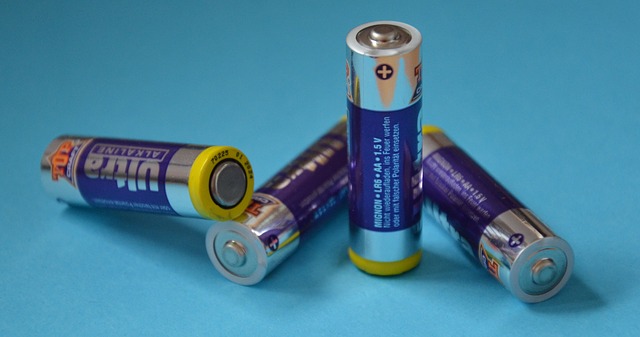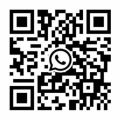Damaged Lithium Ion Battery-Solution And Identification
Dec 16, 2019 Pageview:889
Pioneering work for the lithium battery began in 1912, but the first non-rechargeable lithium batteries became commercially available only in the early 1970s. Tentative followed in the eighties to develop rechargeable lithium batteries. Based on metallic lithium, these early models offered very high energy density. Inherent instabilities of lithium metal, however, placed a damper on the growth, particularly during charging. The cell had a thermal run-away's ability. The temperature will rise rapidly to the metallic lithium melting point and result in a violent reaction. After the battery in a cell phone emitted hot gas, a large amount of rechargeable lithium batteries had to be recalled in 1991.
In this article we have discussed about damaged, defective and recalled lithium ion batteries and what to do with them.
What Happens If You Break A Lithium Ion Battery?
I did some repairs to the electronics and accidentally punctured a small lithium-ion cell battery with a metal sludger (mobile phone capacity).
I hadn't realized at first that I was puncturing the batteries-I noticed a funny smell of burning, and I was... huh? I switched over the charger, saw some smoke curls coming up, and smelled the scent of burning again. That's when I was like, oh... c*ap.... I immediately got rid of the plug.
Now I'm feeling fine-no respiratory trouble, no vomiting, or anything like that. I just rinsed with clean water out of my eyes. (After disposing of the plug, I probably should have done it immediately).
But obviously it is not safe. You should immediately take first aid if such things happened to you..
Lithium
Lithium will be the number one risk when a lithium ion battery is opened. If you get any of it in your body, at very high temperatures, the lithium can react on the skin with moisture and ignite more or less on contact. Higher amounts of lithium, on the other hand, are less dangerous as the hydrogen and other gasses produced form a little blanket between you and the reaction. Small lithium specks will embed on your hair, causing tiny burns in the third degree. Lithium dust can also trigger havoc in your airways, although it is very unlikely that the amount needed to really get into trouble would come from a battery. Lithium metal comprises only a few types of lithium (ion) batteries.
Solvents
When dealing with a bad lithium ion battery, this is what you smell. The solvents have been published. In fact, these are mostly fine; if you've ever done the brilliantly stupid thing washing paint stains off your hands with paint thinner, it's about the kind of solvent that we're dealing with. These also do not combust into especially bad materials, so it is reasonably safe to deal with burning gases.
How Do You Identify Damaged, Defective And Recalled Batteries?
Do you have a bloated, corroded, leaking or burn marked battery? Perhaps the manufacturer has recalled?
Such types of incidents are becoming more frequent as batteries power more and more of the gadgets we use. Damaged batteries of lithium metal or lithium-ion are known to be especially hazardous. If these batteries are transported without proper protection, they are more likely to cause accidents of health, such as sparks, which may result in a fire.
It is therefore not possible to place damaged, faulty or recalled (DDR) batteries in a standard box or a normal jar. They can't be carried by air as well. Transport of such batteries requires a special method for handling and packing. A recycling service that meets all the packaging, handling and transportation requirements of Transportation is also available.
Depending on the battery form and relevant shipping specifications, the service provides the appropriate solution. In addition to accepting damaged batteries, they also provide services to faulty and recalled batteries that have been identified as having a reliability or safety issue by the supplier or consumer product protection that requires the battery to be shipped directly.
What Do You Do With A Damaged Lithium Ion Battery?
Broken or damaged cases can allow moisture and oxygen to enter the battery and oxidize the components of lithium, resulting in a heat reaction. This may result in fires or explosions. Overheating, overloading, and falling or crushing shock can also contribute to heat reactions.
Li-ion batteries that overheat, bend, bulge or swell or smell should be removed immediately
Damaged, faulty, broken and recalled Li-ion batteries must be properly packed and transported to prevent safety issues during transport.
Unlike conventional alkaline batteries and other types of batteries, lithium-ion batteries have many advantages. These also have a longer service life than other batteries and carry more power when properly stored, treated and used. Establishing and following appropriate protocols for these batteries to be stored, treated and used can help prevent fires and explosions. Training staff to understand the dangers of Li-ion and other battery types as well as how to properly handle, store, and maintain them can help prevent damage to batteries, fires, and explosions.
Batteries that are damaged, faulty and recalled are hazardous and require special handling. Don't put them in the garbage because they might cause a fire. The guidelines for proper disposal of DDR batteries vary depending on your situation:
Consumers: Install the DDR battery as soon as possible in a non-flammable material like sand or kitty litter. Consult the Consumer Product Safety information from Health, the website of the manufacturer, or contact the store from whom you bought it to see if the battery was removed. If it has, follow the supplier, distributor, or Health's guidance.
Better, place the battery in a clear plastic bag (one per container) and take it to the recycling center of your municipal hazardous waste (HHW). To see if it allows defective batteries, you can also contact a local drop-off spot. Do not put them in the garbage.
Municipalities: Do not place DDR batteries in your regular container (box or drum) for collection. Employ in-house hazardous waste (HHW) management protocols. If there is no HHW service, please contact Recycle Customer Service to discuss the service for battery recycling. Place the battery in a short-term non-flammable substance like sand or kitty litter.
Retailers: Do not place DDR batteries in your regular collection box because they may cause a safety incident such as a fire or spark. Then, follow the procedures used by the company to treat hazardous household waste (HHW). Customer Service addresses your battery recycling support if you don't have an internal HHW plan. Place the battery in a flame-free sub.
Manufacturers with faulty, damaged or recalled batteries: Contact Customer Service to address the recycling service providing Transportation special packaging and recycling services for these battery types.
- Prev Article: Cathode of Lithium Ion-Component Introduction
- Next Article: Cobalt Free Lithium Batteries-Material Chemical
Leave Message
Hottest Categories
-
Hottest Industry News
-
Latest Industry News
















